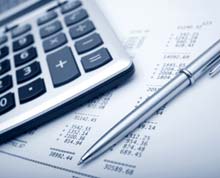
Insider’s Blog
Home » Best Practices for Establishing a Tradeshow Budget
Best Practices for Establishing a Tradeshow Budget
Preparing a corporate marketing budget these days is a daunting task. All companies need to increase sales leads and amp up revenues, but shrinking marketing budgets have forced companies to carefully consider what must stay and what must go as far as budget items. An important component of the overall marketing budget is the portion allotted to tradeshows, which can be a valuable tool to help increase the visibility of your company and boost sales.
 The reality, however, is that no matter how you look at it, tradeshows are expensive endeavors. You have to rent the space, create a display, promote it, stock it, and staff it. So before you decide to undertake a tradeshow, take a comprehensive look at all the costs associated with exhibiting as well as the expected returns.
The reality, however, is that no matter how you look at it, tradeshows are expensive endeavors. You have to rent the space, create a display, promote it, stock it, and staff it. So before you decide to undertake a tradeshow, take a comprehensive look at all the costs associated with exhibiting as well as the expected returns.
Establishing an accurate tradeshow budget early is essential to developing an overall strategy that will achieve success and assure upper management buy-in. The amount you allocate to tradeshows will depend upon the scope of your efforts and the number, size and location of the shows you are planning on exhibiting at throughout the year. Though strategies will vary from company to company, the methods of establishing a tradeshow budget remain relatively the same.
Let’s take a look at some of the larger components you’ll need to be cognizant of when preparing your overall tradeshow budget.
Space rental. Exhibit halls will charge your company based on the size of your display so determine early what size booth you will be using so you can more accurately estimate how many dollars to allocate to booth space rental.
Utilities and related booth expenses. There will be a charge for installing and dismantling your booth. Other expenses include electricity, gas, water, and any other items you may require at your booth during a show.
Exhibit display, signage and accessories. This would include everything from display production, graphics, and banners to booth furniture, literature racks and any equipment needed to demonstrate your products. Crating and storage costs should also be added to this category.
Shipping and drayage. This would include all expenses associated with transporting your exhibit and materials to each location. Freight would include charges for shipping your exhibit, literature, and any other materials to the event location and back to your office or warehouse. Drayage costs account for items delivered to and from your booth space from the loading dock of the exhibit hall or conference center.
Travel and entertainment. Try to put together a realistic estimate on what it will cost you and your staff to attend each tradeshow. This estimate must include travel expenses (airfare, taxi fares, rental cars, etc.), meals, and hotel expenses. This category would also include any expenses associated with entertaining prospects and customers during the show.
Show marketing. This would include all the marketing and sales collateral required to support the exhibit. These materials could be used at multiple shows, so keep in mind that these costs will be spread over a number of shows. These might include product literature, handouts, staff training, and show promotional items.
Want to know how to leverage our experience and make your trade show budget go further? Let’s talk.

